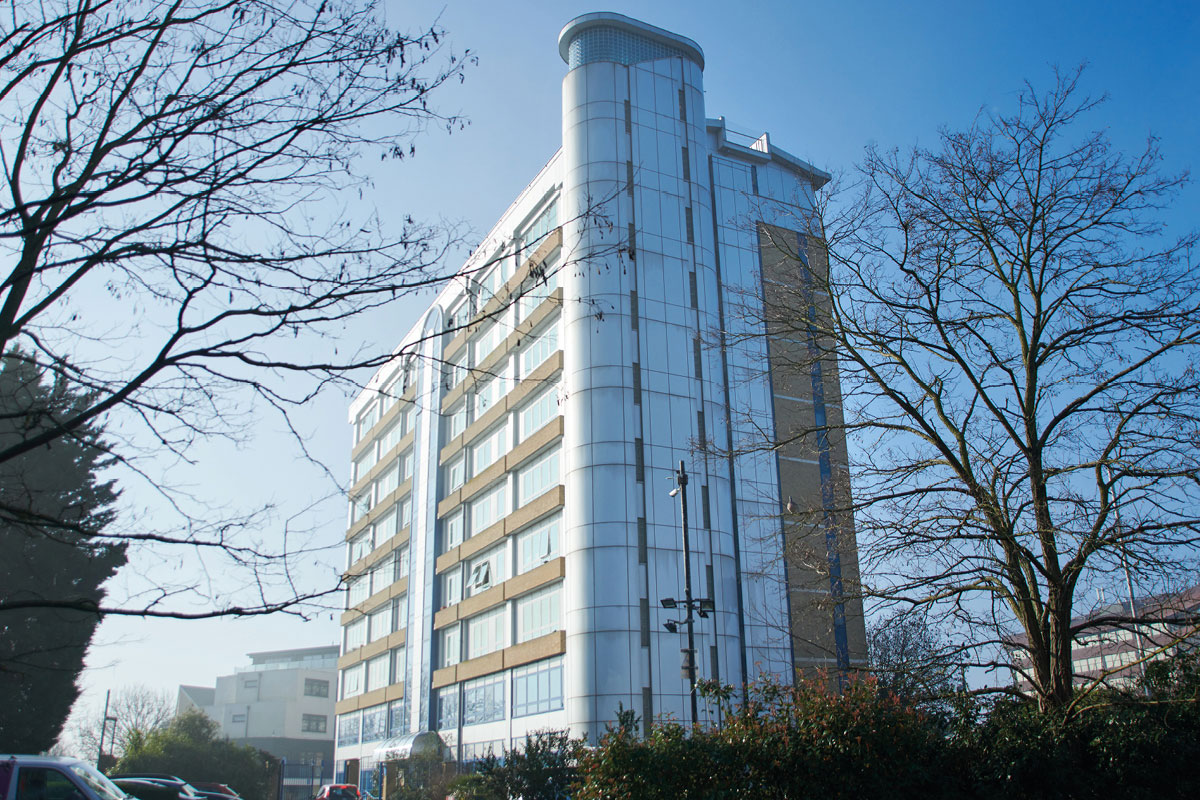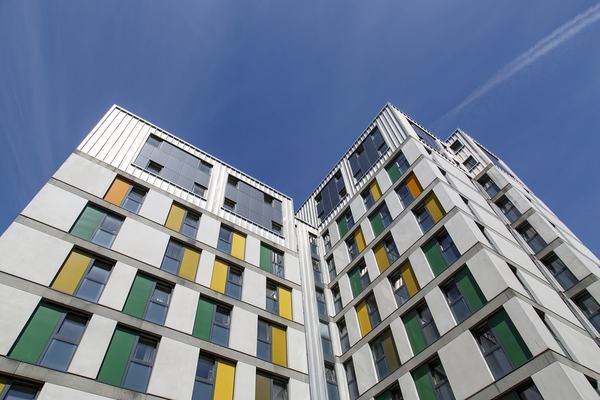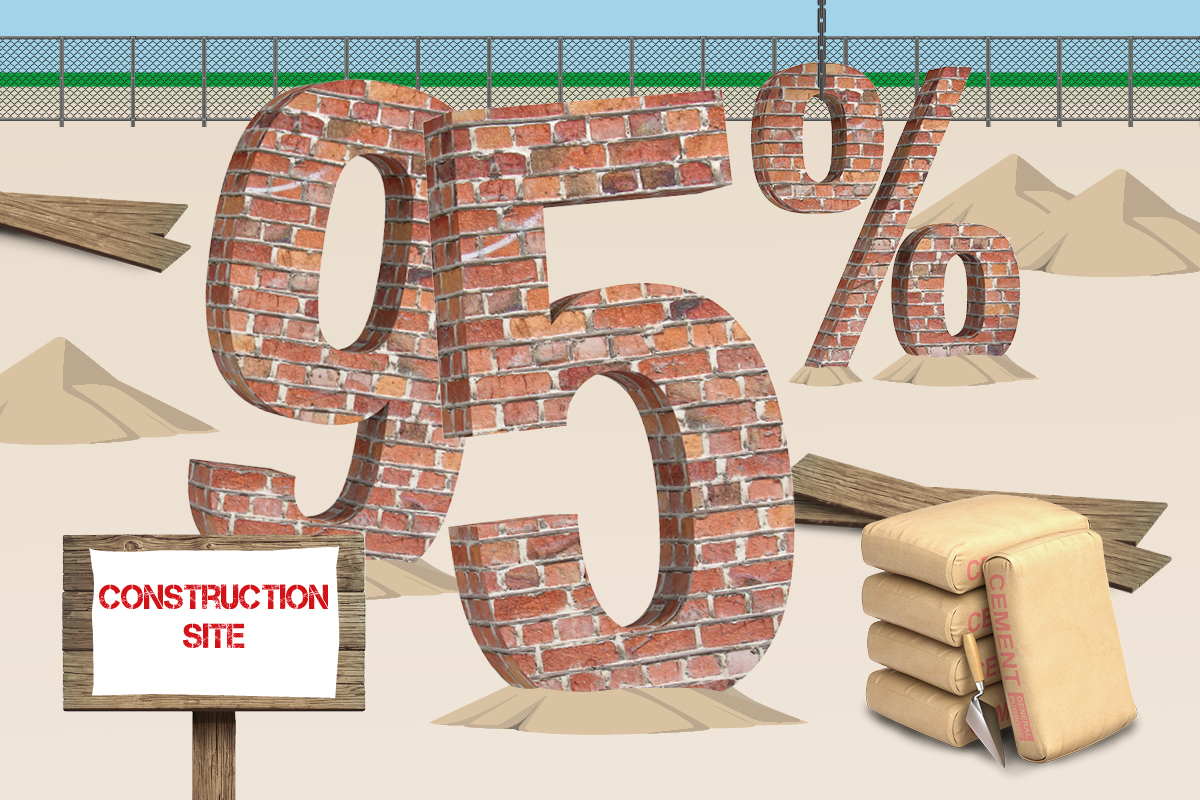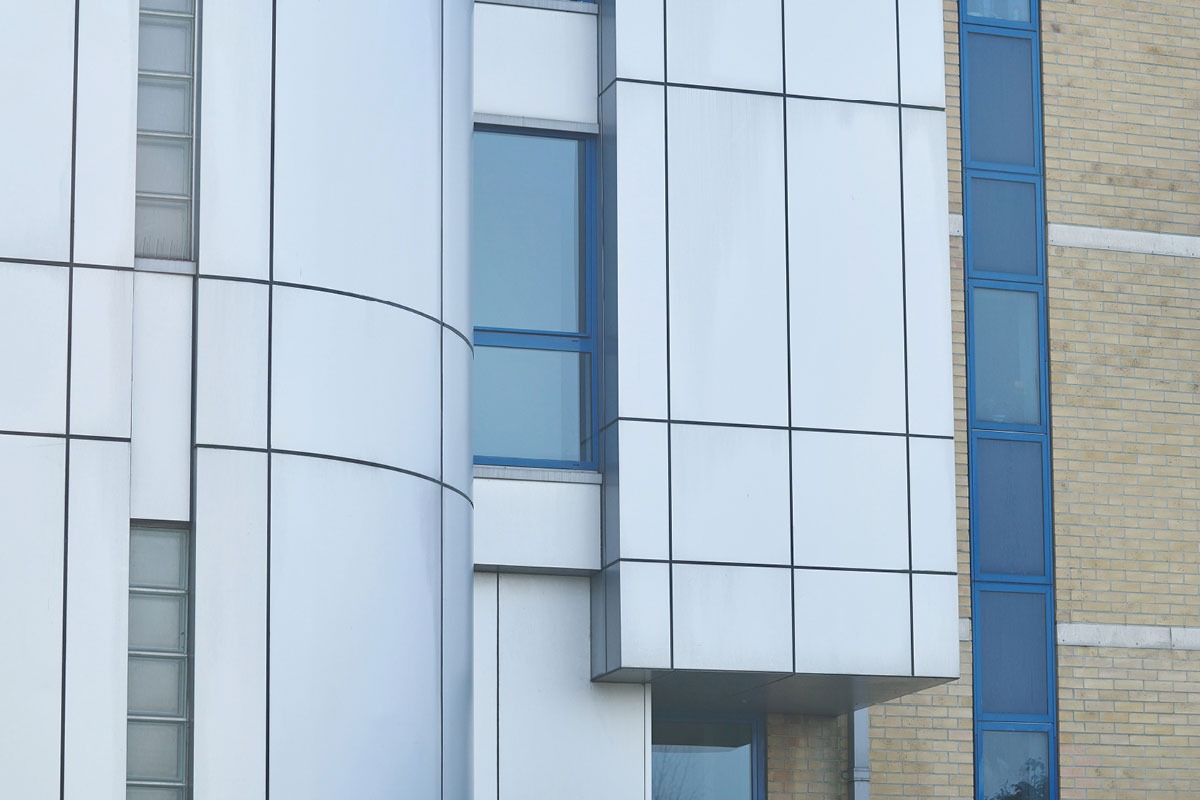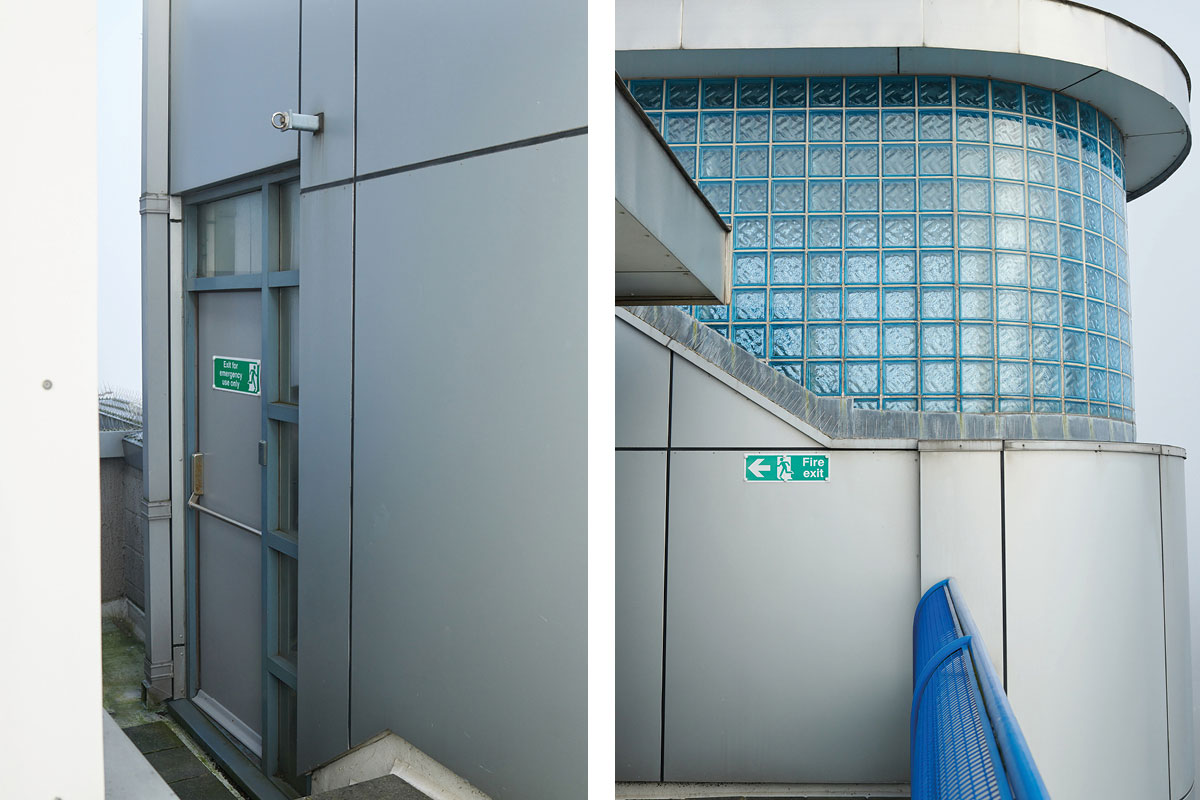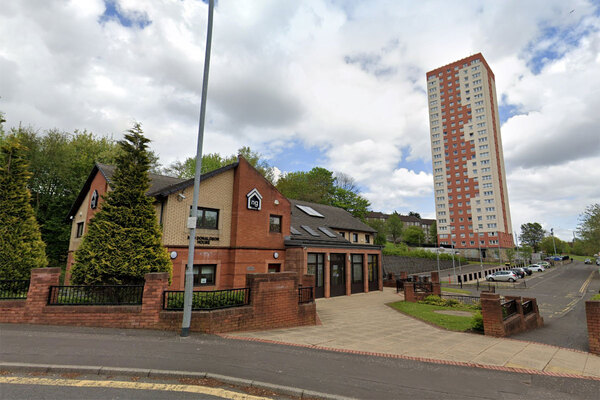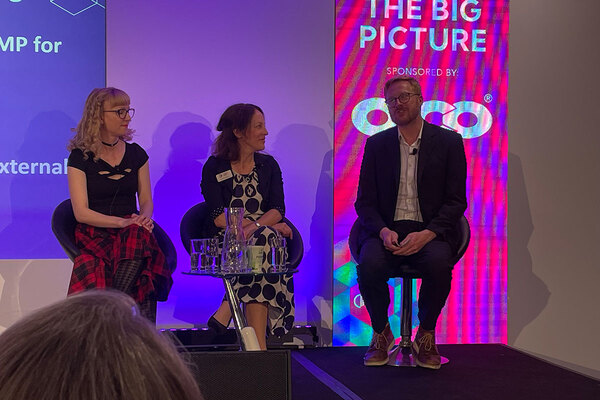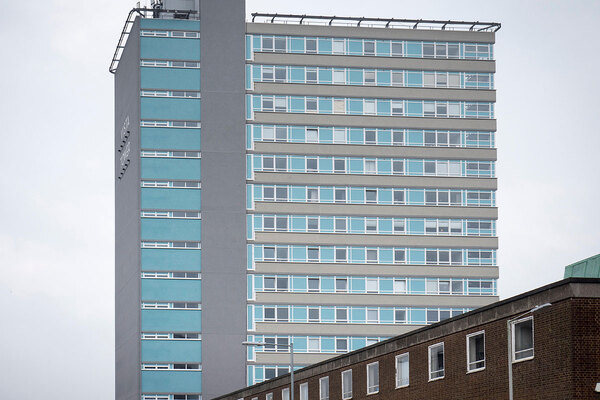You are viewing 1 of your 1 free articles
The cladding nightmare for residents
Around the country, 167 tower blocks are still clad in material similar to that which aided the spread of the fire at Grenfell Tower in 2017. Jack Simpson finds out what life is like for the residents living in fear. Photography by Dan Joseph
Hayley Kennedy bought her flat in the Northpoint building, a high-rise block in Bromley, south-east London, in 2014. As she suffers from a rare condition that has led to her losing her eyesight, the 35-year-old was attracted to the block’s town centre location.
“As a disabled person, it gave me a bus station, a train station and a town centre, all a five-minute walk away. It was ideal,” she says.
However, last year this “ideal” home turned into a prison for Ms Kennedy, when she learned that Northpoint was clad in category three aluminium composite material (ACM) cladding, the same material used on Grenfell Tower before the fire in 2017, which killed 72 people.
“Many residents are faced with bills totalling tens of thousands of pounds, driven by a quirk of British property law that means leaseholders are forced to pay for remedial work”
The government has deemed the material unsafe and in need of removal but, despite this, the cladding has yet to be fully removed from Northpoint or 166 other private residential blocks across the country. Ms Kennedy is now one of an estimated 20,000 leaseholders living in fear of what could happen next.
Furthermore, many residents are faced with bills totalling tens of thousands of pounds, driven by a quirk of British property law that means leaseholders – who don’t own the building and weren’t involved in the design or build – are forced to pay for remedial work.
Residents on a handful of blocks have seen developers step in and pay for the removal of ACM cladding. But the majority have not been so lucky. At Northpoint, leaseholders face bills of more than £60,000 to fix the building’s cladding, as well as the litany of other fire safety issues discovered through surveys of the building carried out post-Grenfell. The work took place more than 10 years ago, meaning there is no chance of an insurance claim.
Taylor Wimpey, which bought the original developer Alfred McAlpine, has said it has no ownership or legal responsibility for the building after it sold it to freeholder Citistead in 2007. Meanwhile, Citistead has flatly refused to cover the costs, pointing out that it has no legal obligation to do so.
To compound residents’ woes, the London Fire Brigade has put a fire safety improvement notice on Northpoint, which if not acted on by the end of April could lead to the building being condemned.
“With all the problems with cladding and fire safety, it makes you feel like you’ve paid for something that was a total lie,” Ms Kennedy says.
Blocks like Northpoint must now rely on new powers given by the government to local authorities under the Housing Act 2004 to enforce remediation work by freeholders. But there are questions over how effective these will be, and it is already clear that the new powers will not stop freeholders from passing costs on to leaseholders.
“The people that are meant to be protecting us and making sure we are safe have let us down,” says Ms Kennedy.
Northpoint was converted from an office block to flats by Alfred McAlpine in 1999, and its residents have lived for nearly 20 years unaware of the potentially lethal envelope that has surrounded them. That changed after Grenfell, when the true nature of the cladding became apparent.
“It is an absolutely dreadful situation,” says local MP Bob Neill. “People are being made ill by this. The government is doing what it can but it is going to have to realise warm words aren’t enough.”
One man, who preferred not to be named, bought a flat at Northpoint with his wife early in 2017, the first property they bought together.
A year later they had their first child, who is now only nine months old. The family feels “stuck and frightened”.
Left to right: Northpoint residents Paul Guy, Rachel Guy, Hayley Kennedy, Rituparna Saha and Luke Austin
“In the course of two years we would have gone from buying our first place, to being bankrupt and homeless with a newborn child,” says the man.
Paul Guy, who bought his flat with his wife Rachel to downsize, has had to postpone retirement plans to cover the spiralling service charge driven by a large waking watch bill. The £6,500-a-week waking watch charges had become so crippling for residents that they decided to carry out the duties themselves to reduce these costs, many doing so on top of day jobs.
Luke Austin has spent more than 1,775 hours on waking watch duty since last year, putting plans to start his own online business on hold.
Northpoint is just one of dozens of blocks up and down the country in this limbo
Citistead tells Inside Housing it remains committed to the safety of leaseholders. It has previously said that it would work with all stakeholders to find a viable solution.
But Northpoint is just one of dozens of blocks up and down the country in this limbo. There are currently 167 private residential blocks still clad in flammable material. For 38 of these, there are no plans in place to remove the cladding. Of the remaining blocks, only 11 have seen remediation started.
A total of 34 have an intention to remove the cladding and are developing plans, while 84 have remediation plans in place. Only seven blocks have had their cladding removed.
However, questions are already being raised about the validity of these plans. One council source tells Inside Housing that authorities are becoming increasingly frustrated with building owners who repeatedly reassure them they have plans but seem reluctant to start work.
The theory is supported by the government’s latest building safety statistics: while the number of buildings with plans increased from 30 to 84 since September, only four blocks have seen work start on them in the same period.
The London Fire Brigade has put a fire safety improvement notice on Northpoint
A spokesperson for the Ministry of Housing, Communities and Local Government says: “There is nothing more important than making sure people are safe in their homes. We are clear that private building owners and developers must replace dangerous cladding quickly.”
In November, that slow pace of work forced the government to take decisive action. Housing secretary James Brokenshire announced that the government would “give authorities full backing, including financial support if necessary” to get building owners to remove cladding.
This support is largely tied up in the awarding of new powers, through an addition to the housing health and safety rating system (HHSRS), to ensure that ACM cladding is covered by the guidance. The HHSRS mechanism is usually used to force building owners to take action over small hazards such as damp and electrics. But already some boroughs are unclear on how the changes would help. A letter sent in February to Mr Brokenshire by Colin Smith, leader of Bromley Council, questioned whether the addendum had given them any new powers, and pointed out that the legislation behind the new HHSRS had not changed.
“I fear what has actually happened instead is that expectations have been raised, without solutions being set in place to deliver them,” Mr Smith said in the letter.
Mr Smith also questioned where the necessary funding would come from, and why the joint inspection team, which was promised back in June to support local councils to carry out enforcement action, was still not operational.
Leaseholders at Northpoint face bills of more than £60,000 to fix its cladding
Inside Housing understands that recruitment for the team finished earlier this month. The government, which is putting in £1m to support the joint inspection team, has said it is now engaging with local authorities to support enforcement action.
One local government source says that the lack of clarity around funding would prevent a number of councils taking action, with remediation costs on most blocks in the millions. “There are going to be councils that say, ‘We don’t have that money in our general fund; we need reassurances from the government before we start work’,” they add.
Hefty costs are already being pushed on to residents of some blocks
Inside Housing understands that under the funding agreement, councils will have to go to the Treasury on a development-by-development basis, which could also slow remediation down.
Nevertheless, some councils are ready to use their new powers. Tower Hamlets, which has the highest number of ACM-clad buildings (56), intends to carry out enforcement action on the 87-home Victoria Wharf development in the borough. Sterling Estates Management, the block’s property manager, has not ruled out changing the cladding and said it was looking to find the right replacement product at the right cost for leaseholders.
However, there are concerns that because the new powers are untested, they are open to challenge. “Some freeholders might roll over, but there may be others that want to challenge these notices,” says a local council figure.
Even if the enforcement actions are successful, the issue of who pays still isn’t dealt with. Mr Neill says that the reliance on the Housing Act powers doesn’t in itself override the condition in the lease that enables the freeholders to pass the costs on to residents.
And this was reflected in a letter sent by Citistead, the freeholder at Northpoint, to residents before Christmas. The letter called the government’s enforcement plans a “hollow threat” and said that it was highly unlikely that the local authority would be able to secure a repayment from them.
Hefty costs are already being pushed on to residents of some blocks. Earlier this month, residents of New Providence Wharf in Poplar were handed an ultimatum by their developer and freeholder Ballymore.
Grenfell-style cladding surrounds a fire exit at Northpoint
They now have until 28 February to accept Ballymore’s offer to provide a bridging loan and pay 20% of the full costs of re-cladding the block, or risk having to foot the full bill – estimated at £2.4m. They have also been threatened with having the deal removed if they take indirect or direct legal action. Even with Ballymore’s contribution, residents would likely be facing bills of between £2,000 and £13,000 per flat. Ballymore has declined to comment.
MP Jim Fitzpatrick, who represents the residents of New Providence Wharf, says: “Lots of these people in the block have bought their first property, they are mortgaged up to the hilt, they haven’t got the money to repay another loan.”
And 2019 could see these issues spread to those in non-ACM clad buildings, too. In March, the government will officially begin testing non-aluminium composite materials, including zinc and copper composite and high-pressure laminate (HPL) cladding. The results are expected in the summer. Inside Housing has been told that this could open the floodgates, and blocks currently deemed safe may also be assessed as in need of remediation following the tests.
MPs across the political spectrum believe that the government must take more meaningful action
Last month, academic Richard Hull told Inside Housing that the next Grenfell-style disaster would be from a building clad in HPL. HPL is already being taken off some blocks by housing associations such as Metropolitan Thames Valley. In Ipswich, meanwhile, leaseholders face a £2.4m bill to remove HPL from the town’s St Francis Tower.
In November 2018, insulation company Rockwool carried out research that estimated that a total of 1,678 buildings could be clad in combustible materials, both ACM and non-ACM. But Steve Reed, fire safety campaigner and MP for Croydon North, says we still don’t know the true scale.
“We do not know how many of these buildings have got stuff on. How have we got to this stage? It is a national scandal,” he says. “The government needs to act, as it is their responsibility for not taking action after the Lakanal House fire in 2009.”
Indeed, MPs across the political spectrum believe that the government must take more meaningful action. Mr Neill says that while he is all for taking money off freeholders and developers, the government needs to be realistic about the fact that this will not be possible in some situations. He suggests that new legislation could be an option.
But whether it is loans, enforcement action or new legislation, a solution needs to be found, and quickly. Thousands of people in tower blocks like Northpoint are still living in fear. And before their situations are resolved, thousands more could yet join them.
